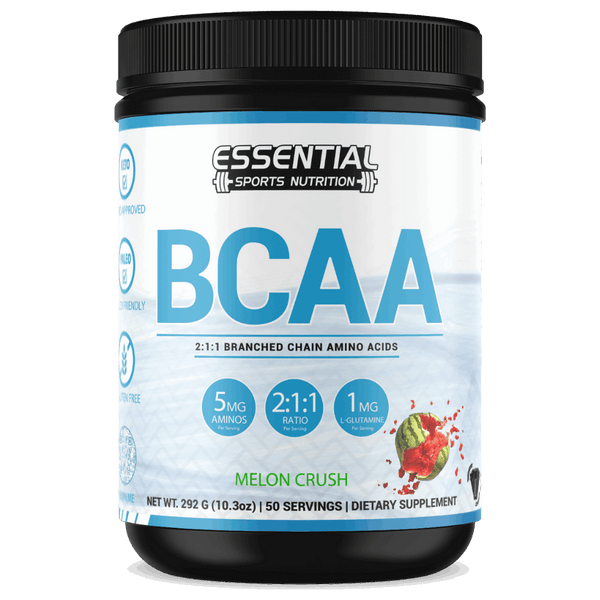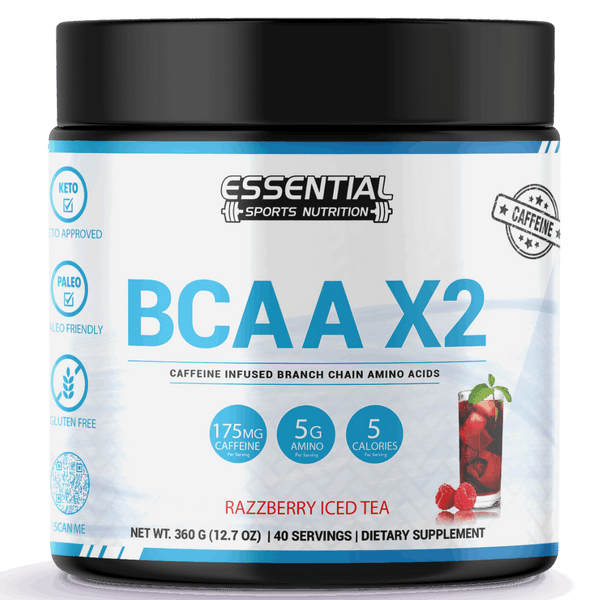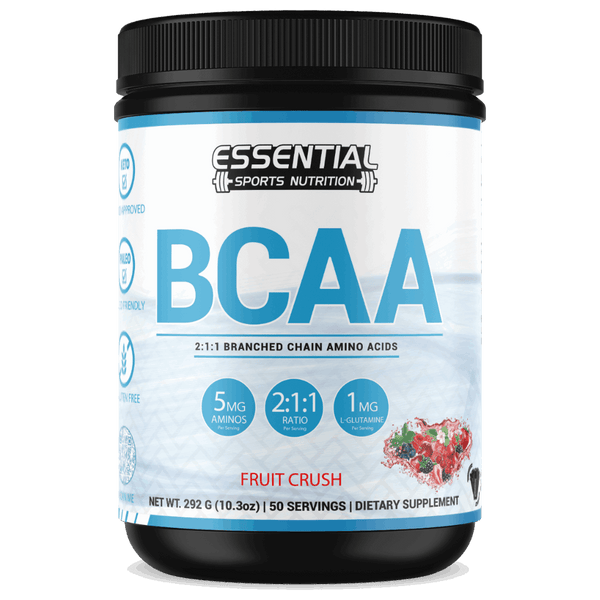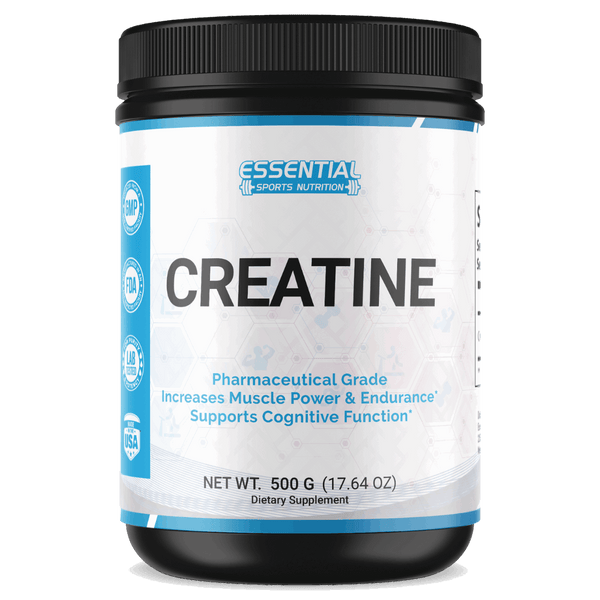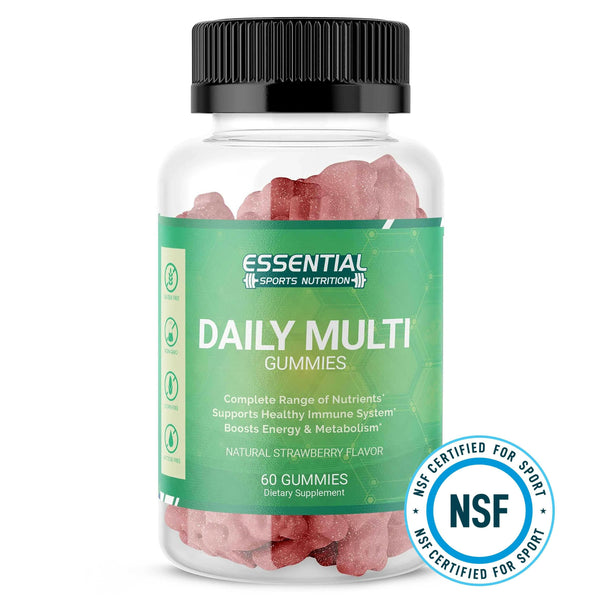Zone 2 Cardio: Low-Intensity Training for Big Results
Zone 2 cardio is all about heart rate training for better endurance and heart health. It helps you improve without overdoing it. Keeping a steady pace is key to building stamina over time. This method works best when combined with strength exercises and varied workouts. A balanced approach is essential for boosting athletic skills and reaching fitness objectives.
Zone 2 cardio prepares you for high-intensity training too if you know how to utilize it. Pace yourself to avoid burnout and listen to your body's needs. Regular zone 2 routines are a must for lasting health benefits. Start small with your fitness goals. Then, increase your workout challenge gradually. Having clear goals keeps you motivated and tracks your success. Add variety to avoid boredom. Different exercises make your training fun and effective.
Working with a trainer can offer custom tips for your fitness level. Mostly, just keep your focus and remember why you started. With patience and correct methods, you will improve your fitness significantly, challenge yourself, and enjoy each step of the process!
Understanding Low-Intensity or Zone 2 Cardio Training
Starting your journey to better heart health and stamina means learning about Zone 2 cardio. This kind of exercise is key for building a strong aerobic base. It helps you work out at a level that’s both sustainable and effective, bringing life-changing benefits.
What Is Zone 2 Cardio?
Picture a workout where you push hard enough to up your heart rate and stamina. But, you can still talk easily. That's Zone 2 cardio for you. It finds the sweet spot in your heart rate, helping you boost endurance and heart health. Plus, it's great for burning fat efficiently.
The Role of Heart Rate in Fitness and Endurance
Your heart rate tells a lot about your fitness level and how long you can keep going. Staying in Zone 2 means your body can keep up with aerobic exercises longer. This builds a foundation for better athletic performance and health over time.
A Brief Overview of the Heart Rate Zones
Heart rate zones differ for each person and guide your fitness journey. Zone 1 is about gentle warm-ups. But, Zone 2 is where the endurance-building happens. Here, you can maintain a good pace without getting too tired. Past Zone 2, workouts get tougher. But mastering Zone 2 gets you ready for these harder challenges.
The Science Behind Zone 2 Cardio Benefits
Zone 2 cardio training isn't just a workout. It's backed by science to improve your health. Working out in this heart rate zone boosts your aerobic ability. The science shows Zone 2 workouts are key for a healthier life.
The Aerobic Advantages of Zone 2 Workouts
Zone 2 training stands out because it boosts aerobic fitness. It lets your heart and lungs work better together. This means you can get more oxygen and last longer in any physical activity.
Regular Zone 2 training teaches your body to use oxygen better. This helps you keep your energy up and fight off tiredness. It's like training for life's long races, not just short sprints.
How Zone 2 Training Affects Muscle Repair and Recovery
Training in Zone 2 doesn't overwork your muscles. This means they can work well without too much stress. It leads to better recovery and muscle growth, so you can keep getting stronger.
Evidence suggests that this moderate pace can lower cortisol. That's a stress hormone that slows recovery and breaks down muscle. So, Zone 2 workouts are a way to care for your body.
Cardiovascular Improvements: From Blood Pressure to Longevity
Studies show steady aerobic exercise, like Zone 2 training, boosts heart health. It can lower blood pressure and cut heart disease risk. Your heart and blood vessels get stronger and more flexible.
Sticking to this training can bring big changes, not just in the gym. It makes your heart and blood vessels healthier. This sets you up for a longer, healthier life.
-
Improved blood flow and circulation
-
Enhanced mitochondrial efficiency
-
Reduced risk of cardiac events
-
Optimized lipid profile
Add Zone 2 cardio to your life and see a mix of health benefits. These advantages are based on science. They'll help improve your fitness and life quality for many years.
Calculate Your Max Heart Rate and Heart Rate Zone for Zone 2 Cardio
To effectively add zone 2 cardio to your workouts, you'll need to find your heart rate zone. It's key to know how to figure out your heart rate zone. This ensures your exercises have the right intensity for aerobic gains. You have several options to find your heart rate zone. These include heart rate monitors, manual counts, or machines that show your heart rate.
Let's look at common ways to determine your heart rate zone:
-
Using a heart rate monitor while exercising gives you your BPM in real-time.
-
Subtracting your age from 220 gives you your max heart rate (MHR). Then, figure out a percentage of this MHR for your zone.
-
Mobile apps or fitness gadgets can give ongoing heart rate data.
Getting your heart rate zone right is key for effective training in zone 2. This zone has your heart working at 60% to 70% of its max. It's a sweet spot between low and high-intensity workouts.
By using these methods, you can enhance your zone 2 cardio. Once you know your zone, you can adjust your cardio. This improves your stamina and heart health.
Implementing Zone 2 Cardio into Your Fitness Routine
After finding your heart rate zone, start adding zone 2 cardio to your workouts. You can do this with running, cycling, or swimming. These activities are great for fitting zone 2 cardio into your plan for better fitness.
-
Create a Zone 2 Cardio Schedule: Pick days and times for zone 2 activities. This helps make it a regular part of life.
-
Mix It Up: Combine zone 2 and high-intensity workouts. It keeps things interesting and enhances training.
-
Track Your Progress: Keep an eye on your heart rate. This makes sure you’re working out at the best intensity.
-
Stay Patient: It takes time to build endurance. Stay focused on your zone 2 cardio routine.
For those unsure how to fit zone 2 into their routine, here’s a weekly guide to implement zone 2 cardio.
| Day | Activity | Details |
|---|---|---|
| Monday | Zone 2 Cardio | 30-minute brisk walk or light jog |
| Tuesday | Strength Training | Upper body workout - no cardio |
| Wednesday | Zone 2 Cardio | 40-minute cycling at moderate intensity |
| Thursday | Rest or Active Recovery | Gentle yoga or stretching |
| Friday | High-Intensity Interval Training | 20-minute HIIT session |
| Saturday | Zone 2 Cardio | 50-minute swim at a consistent pace |
| Sunday | Rest | Full recovery day |
Adding zone 2 cardio to your week should mesh with your life and likes. It boosts your heart health, stamina, and enjoyment of being active. This leads to a healthier, fitter you.
A Practical Guide to Calculating Your Zone 2 Heart Rate
Finding the right exercise level is key. You need to calculate your zone 2 heart rate. This guide will show you how to find your zone 2 range. This makes sure your workouts match what your body needs.
Calculating Your Maximum Heart Rate (MHR)
Start by figuring out your maximum heart rate (MHR). MHR is the highest your heart should beat when you work out in a minute. This can change for different people. However, there's a simple way to guess it:
-
Subtract your age from 220.
For example, if you're 30:
-
220 - 30 = 190 beats per minute (bpm).
So, your MHR would be around 190 bpm.
Determining Your Personal Zone 2 Range
Zone 2 heart rate is about moderate workouts. Here, you get the best aerobic benefits without too much stress. It's usually 60-70% of your MHR. To figure out your zone 2, use your MHR to calculate these percentages. Below is a table to help:
| Age | Estimated MHR | Zone 2 Lower Bound (60%) | Zone 2 Upper Bound (70%) |
|---|---|---|---|
| 30 | 190 bpm | 114 bpm | 133 bpm |
| 40 | 180 bpm | 108 bpm | 126 bpm |
| 50 | 170 bpm | 102 bpm | 119 bpm |
These numbers are just starting points; your true MHR can vary. Use this table to find a ballpark zone 2 range. Including this in your routine will boost your aerobic strength and improve your endurance and heart health.
The Myths and Truths of Heart Rate Training
Many myths exist about heart rate training. Some people think it's the perfect way to measure exercise intensity. Yet, it's important to know that many factors can alter heart rate training accuracy. Things like medicines, stress, not enough sleep, and caffeine affect it.
To use heart rate monitoring well, listen to your body too. For example, stress may increase your heart rate. But if you're not feeling the strain, the numbers might need to be corrected. By paying attention to both the data and how you feel, you can adjust your workouts better.
It's also key to see if heart rate training suits you. Endurance athletes might find it very useful. But those new to working out or with certain health issues might prefer less structured approaches.
Knowing heart rate training well helps you plan workouts that fit you. This way, you'll likely keep up your fitness longer.
-
Everyone's heart rate varies a bit.
-
Things like drugs, stress, caffeine, and sleep can change heart rate readings.
-
Using both hard data and how you feel can improve your exercise routine.
At last, always check your heart rate zones since they change as you get fitter. Your Zone 2 from six months ago may now be too easy. So, to keep benefiting from heart rate training, you have to adjust your zones.
Low-Intensity Workouts: The Reemergence of Zone 2 Cardio
In the big world of fitness, low-intensity workouts are making a comeback. Zone 2 cardio is getting a lot of attention. It's moderate training that uses the body's aerobic energy systems. This is different from the hard push of high-intensity interval training (HIIT).
Now, many are seeing the good side of low-intensity steady-state exercise (LISS). They find it great for boosting fitness and endurance.
Comparing Zone 2 Cardio to High-Intensity Training (HIIT)
When thinking about zone 2 vs HIIT, consider what each brings to your health. Zone 2 asks for a steady effort over time, while HIIT is about quick, intense work followed by rest. Each has its benefits, depending on what you want from your workout.
The Rise of Low-Intensity Steady-State Exercise (LISS)
Low-intensity workouts are becoming more popular thanks to their flexibility. They fit many fitness levels and workout styles. LISS is part of this trend, known for boosting endurance and a strong heart.
| Exercise Approach | Intensity Level | Duration | Main Benefits |
|---|---|---|---|
| Zone 2 Cardio | Low to Moderate | Long | Enhanced aerobic capacity, fat utilization, and endurance |
| High-Intensity Interval Training (HIIT) | High | Short | Improved metabolic rate, fat loss, and time efficiency |
| Low-Intensity Steady-State (LISS) | Low | Long | Reduced stress on joints, accessibility for all fitness levels, and endurance-building |
Maximizing the Health and Performance Benefits of Zone 2 Cardio
Whether you're a seasoned athlete or just starting with fitness, knowing how to use the health benefits of zone 2 cardio is key. Zone 2 cardio is the sweet spot of exercise where your heart rate is just right. It makes you stronger and more enduring.
Strengthening Your Aerobic Foundation with Zone 2 Training
Every great building starts with a solid base. It's the same for your fitness. Including zone 2 cardio in your workouts builds an aerobic base. This base is your stepping stone for tougher exercises. It makes your heart stronger and gets more oxygen to your muscles.
Doing zone 2 exercises regularly means all parts of your fitness will get better.
Improving Endurance and Stamina Through Consistent Practice
Building stamina takes time and dedication. Zone 2 training is an easy yet effective way to start. It works your muscles in a way that boosts your stamina.
Keep doing zone 2 cardio and watch your endurance soar. You'll do better in your workouts and push past your old limits.
Enjoy the benefits of a healthier heart and better stamina. Each session of zone 2 training takes you a step forward. Your body will be stronger, and you'll burn calories longer.
Zone 2 Training Can Also Be Combined - with Strength Training and Other Activities
Mixing zone 2 cardio and strength training offers a more complete approach to fitness. It boosts endurance, muscle growth, and health. Mixing these methods, whether you're lifting weights or into HIIT, achieves great fitness balance.
Zone 2 Training for Weightlifters and HIIT Enthusiasts
For weightlifters, adding zone 2 cardio can improve recovery and muscle stamina. HIIT lovers can also benefit from low-intensity cardio for comprehensive fitness. It builds a healthy aerobic foundation while keeping stress low. This blend creates a balanced workout plan.
Incorporating Low-Intensity Cardio for Comprehensive Fitness
Merging strength, flexibility, and endurance is key to overall fitness. Zone 2 cardio is crucial for this mix. Its mild intensity complements hard strength workouts. It allows for active rest and keeps your heart healthy while lifting heavy.
| Training Component | Benefits | Frequency |
|---|---|---|
| Strength Training | Muscle growth, increased metabolic rate, bone density improvement | 2-4 times per week |
| Zone 2 Cardio | Improved oxygen utilization, fat burning, recovery enhancement | 3-5 times per week |
| High-Intensity Interval Training (HIIT) | Peak fitness boosts, time efficiency, metabolic conditioning | 1-2 times per week |
Combining zone 2 cardio and strength training tailors a fitness plan covering all bases. Keep it regular and manage exertion to boost endurance and strength. This ensures good health without the risk of exhaustion or injury.
Conclusion

An effective fitness strategy is more than just quick wins. It's about long-term health and building endurance. By using a heart rate zone that boosts your aerobic system, you boost your health and wellness lifestyle.
The summary of zone 2 cardio gives you the tools to tune your workouts for the best results. You know how to identify your heart rate zone, cut through the myths, and include zone 2 exercises in your fitness plan. These steps will help you get better at endurance and heart health.
Our final thoughts on zone 2 cardio aim to motivate you to keep going with your fitness goals. By applying what we've discussed, you'll see great progress. Zone 2 cardio will take your fitness to new levels. Your dedication to getting stronger and healthier deserves applause. May your hard work lead to great health and top-notch performance.
Benefits of Zone 2 Training FAQs
Q: What is zone 2 cardio?
A: Zone 2 cardio refers to training at a specific heart rate zone that is typically around 60-70% of your maximum heart rate. It is a low to moderate intensity level that helps improve aerobic capacity and endurance.
Q: What are the benefits of zone 2 training?
A: Zone 2 training offers numerous benefits including improved aerobic fitness, increased fat burning, enhanced endurance, better recovery, and overall cardiovascular health.
Q: How do you determine your zone 2 heart rate?
A: To find your zone 2 heart rate, you can calculate it based on a percentage range of your maximum heart rate. It typically falls between 60-70% of your maximum heart rate.
Q: How often should you do zone 2 cardio per week?
A: The frequency of zone 2 cardio sessions per week depends on individual fitness goals and training intensity. Generally, 2-4 sessions of zone 2 training per week can be beneficial for most individuals.
Q: What is the difference between zone 2 and zone 3 cardio?
A: Zone 2 cardio is performed at a lower intensity level (60-70% of max heart rate) compared to zone 3 cardio which is a moderate to high intensity level (70-80% of max heart rate). Zone 2 focuses on aerobic development while zone 3 involves more anaerobic efforts.
Q: Why is it important to train in zone 2?
A: Training in zone 2 helps improve endurance, enhance fat metabolism, build a strong aerobic base, and allow for proper recovery between intense workout sessions. It is a fundamental part of an effective training program.
Q: How can you calculate your maximum heart rate?
A: A common method to estimate your maximum heart rate is by subtracting your age from 220. This provides a rough estimate of your maximum heart rate, which can be used to determine different heart rate zones for training purposes.




